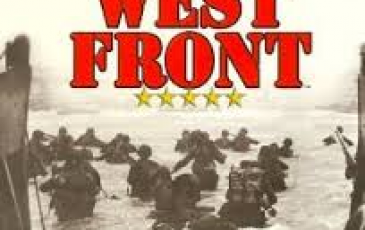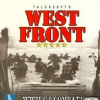| Rating: |
7.67 (11) |
| Games Played: |
12 |
| SM: |
9 |
| Turns: |
45 |
| Type: |
Custom |
| First Side: |
Axis |
| Second Side: |
Allies |
| Downloads: |
448 |
Medenine, 250 km W of Tripolis, Tunisia : [Best played with teams] The Eighth Army's methodical advance from Tripoli, slowed by the need for a massive buildup of fuel and supplies, had been too late to take any pressure off Anderson's forces during the Kasserine crisis. But by February 25, some units were west of Medenine, while the rest of XXX Corps and the New Zealanders were moving up. Montgomery expected an enemy spoiling attack, and at 0600 on March 6 it came. The point of assault was at Medenine, an important road and track junction. Rommel had submitted his proposal that his forces, too weak to hold a long front, should retreat, link up with von Amim's, and hold a line from the northem Tunisian coast through the area around Djebel Mansour (southeast of Pont- du-Fahs) to Enfidaville. This was logical, but it meant that the First and Eighth Armies would unite and also meant giving up many important Axis airfields. On March 8, Kesselring told Rommel that his proposal had been tumed down by HitIer and Commando Supremo. In the meantime, Rommel, Messe, Ziegler (acting Commanding Officer of D.A.K.) , and the commanders of the German armored divisions discussed plans for the attack. Rommel was not well and no doubt discouraged and bitter about the lost opportunities and the repeated flouting of his advice. Unlike the dynamic commander of old, he did not press his own views of the coming battle and allowed Ziegler and Messe to make the final plans. The attack was to be made by D.A.K. (with 15th and 21st Panzer Divisions) advancing toward Medenine and the high ground to the northwest while 10th panzer Division attacked from the south through Hallouf Pass. Exact Italian strength is not known but Axis records (incomplete) suggest that the German units had some 124 field guns, 33 88s, and 58 anti-tank guns. As of March 4, D.A.K. could put 144 "runners" into action, most PzKpfw III and IV. Axis aircraft were estimated at about 160. Montgomery had reinforced XXX Corps (Lieutenant General Oliver Leese) with the 2nd New Zealand Division and 201st Guards Brigade. The combined forces held a front of some 24 miles. In round numbers, Leese had 3 veteran divisions, the equivalent of a fourth, 300 tanks, 350 guns, and 460 anti-tank guns, with 3 fighter wings ( about 300 aircraft) based on forward fields. Men and guns were weIl dug in. Anti-tank guns were well sited and used for once in their primary role of killing tanks, not protecting the infantry or artillery .The artillery was zeroed in on prearranged squares. The tanks were dispersed in the rear of the infantry, ready to counter-attack when necessary. A frontal attack on such a position was doomed from the start. The anti-tank gunners had a field day, while massive artillery concentrations pinned down the advancing infantry and wrecked tanks and vehicles (XXX Corps Artillery fired some 30,000 rounds ). German sources mention the deadly effect of shell bursts on stony ground, showering infantry and gunners with fragments; also that the artillery regiments suffered severely from attacks by low-flying aircraft. Three batteries of "Nebelwerfers" were destroyed by fighter-bombers. At the few points where penetrations of the British lines were made, counterattacks soon restored the situation. Beaten back in their first attempt, the Panzers and Panzergrenadiers tried again at 1430. Once again a rain of shells on the concentration areas drove the infantry to seek cover and brought the Panzers to a halt. As darkness feIl, the D.A.K. disengaged, losing several more tanks in the process. Any hope of renewing the attack next day was abandoned, and Rommel's last battle in Africa was over. Ironically, it was a repeat of some of his early victories - tanks advancing against murderous gunfire from well concealed positions. There were even some anti-aircraft guns used in anti-tank roles. Only this time the anti-tank guns were British and the blazing wrecks were German Panzers. British casualties were negligible.

































Sun Tzu
* Overall, artillery accounts for the most damage to both sides.